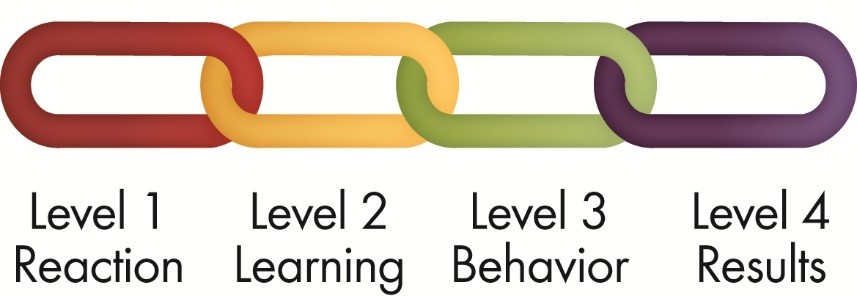Think about a training executed for your employees which took a lot of time and money and which was successful, at least when it comes to the subjective feeling. Satisfied participants, nice ratings for trainer and program, everything is fine. Not long afterwards the training is in the spotlight again and with it the unavoidable questions: What was the real outcome of the training? Where and what are the direct results? What was the use for the company? The Kirkpatrick methodology based on 4 levels of evaluation does not only prepare HR and development managers to answer these questions. First and foremost it is a methodology to increase training results significantly. In the following you find an overview.
Training evaluation based on four levels
Shall we evaluate trainings and programs in detail? We’ll all agree that the answer is a clear “Yes”. But how does effective and meaningful training evaluation work? Happy sheets? Surveys? Tests? Or do we need something more deep and meaningful?
The model from Kirkpatrick Senior – often called the “Prime father of training evaluation” – differs four levels of training evaluation:
Level 1 – Reaction: How did participants like the measures, the training and the general set-up? (This is what happy sheets evaluate, for example.)
Level 2 – Learning: Did the participants learn something new? Did they have new competencies after the program?
Level 3 – Behaviour: Did the participants’ behaviour change after and due to the training?
Level 4 – Results: Which results and changes did the training bring for the company? (E.g. increase in profit, gain in efficiency, cost reduction, improvement of the leadership culture and of relations inside the company)
Planning and evaluation „with the end in mind“
In order to evaluate training programs in an effective way, the aims of a training have to be clarified at first. Jim Kirkpatrick developed the model of his father Don and offers a speciality with his “New World Model” by stating to start with level four. That means that at the beginning of the design and planning of a training always has to be the question: What about the business results?
An interesting fact is that this level four often does not only come at the end of current trainings and trainings designs, but rather is ignored totally.
Following the motto “Start with the end in mind!” Jim Kirkpatrick focuses on level four and puts it at the beginning of any plans and evaluations of training programs. Learning and “fell-good” targets of participants follow next and are based on the most important level four.
Central questions for planning and evaluation of trainings could be:
Level 4 – Company success: What are the aims and expectations of the company? Which results should be achieved and how can they be measured?
Level 3 – Change of behavior: Which behavior of employees is necessary in order to achieve those aims and expectations?
Level 2 – Learning success: What should the employess know after the training? Which tools, techniques and tricks should they master?
Level 1 – Satisfaction: How can the process of the training can be done in order that all persons involved feel good and are happy in the end?
Related articles:
- A learning transfer platform as the fountain of youth for L&D
- Effective learning with webinars – 8 must-haves for HR
- Monster or softy? – Successful with situative leadership
- Big changes are coming up – Remko Verheul about the future of the L&D industry


